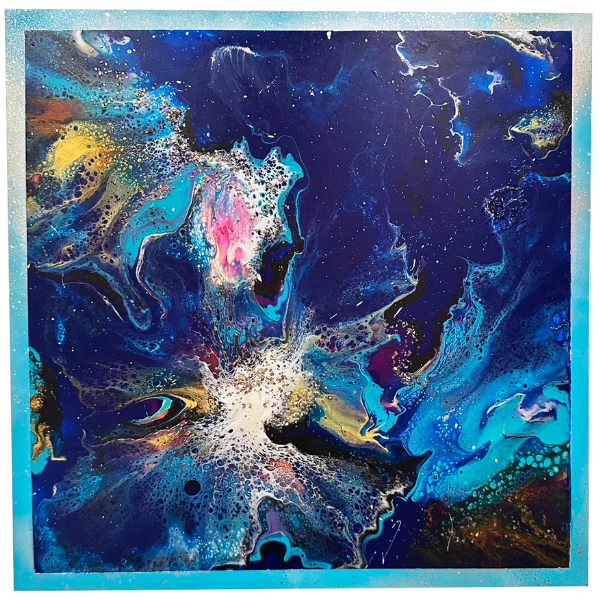by Jessica Oest, Editor-in-Chief, Managing Editor, Riverside Campus
Food is everything we are. It’s an extension of nationalist feeling, ethnic feeling, your personal history, your province, your region, your tribe, your grandma. It’s inseparable from those from the get-go.
—Anthony Bourdain, n.d.
Food is often viewed as one of the most culture-defining aspects of people’s lives. As Anthony Bourdain suggested in the above quote, food is inseparable from everything that defines us as people. Everybody has stories about how their mother, grandmother, father, or other family members make the “best” dish. Food is a significant component of our cultural identity from Latin America to Europe, Asia, and America. “Food, like language, exists as a vehicle for expressing culture. One grows up eating the food of their culture and it becomes a part of who they are. It operates as an expression of cultural identity” (Lawrence & Tushman, 2020).
We all have our own life histories and cultures and come from different walks of life. Where we come from socially, culturally, economically, and more all influence our experiences and interactions. These factors can determine how we approach situations where we interact with others. Breaking bread, and listening to stories about everyone’s experiences can create a sense of community because none of those differences break the link we all share. We are all human. Society and the world have become increasingly divisive in recent years. Still, there are many ways we can bridge those divides and make room for conversations and experiences that bring about understanding and camaraderie. We can break barriers and share in each other’s differences and similarities in many ways.
One such way is by taking the time to break bread with one another. In doing so, we can provide an opportunity to learn from each other and about the cultures and family traditions that are different from our own. Breaking bread together allows us to transcend borders, create conversation, and further emphasizes the idea of transnationalism, which brings us closer together. Transnationalism is a way for people from different countries, cultures, and beliefs to find ways to connect.
Culture is Transnational
Culture, in a singular idea, is all of those things that come from past generations. The things that have been passed down to us from our parents, grandparents, great-grandparents, and so on. It is the stories, the music, the folklore, the ideas, and beliefs that we carry forward for future generations. Szulc (2022) wrote in the International Journal of Cultural Studies that culture in the modern-day concept and idea is already fundamentally transnational for various reasons. “Culture is transnational. It is now more transnational than ever, in times of rapid digital developments, intensified cultural exchanges, and large migration flows” (Szulc, 2022). Despite the issues that create division in our society, today’s digital age makes it easier than ever to share in one’s culture, and the internet and social media allow you to exchange ideas, open the door for meaningful conversations, and find common ground between yourself and someone you may not realize shares your beliefs.
Transnationalism ties together ideas that are specific to a time and place in one’s culture. Transnationalism begins with “Connectedness across borders, the formality/informality of frequent cross-border activities and practices, and the high intensity and degree of cross-border exchanges are the main characteristics of transnationalism” (Tedeschi et al., 2022). So many aspects of our lives could be seen as inherent to our culture, beliefs, and country, when we cross these borders we are collecting ideas and thoughts. And most importantly exchanging this with each other comes across all borders both literal and figuratively. Transnationalism is, ultimately, a way to share those inherent characteristics with others outside of our culture or country. When we think of transnationalism, that perspective is the key that opens doors to share with others with confidence and pride in what we bring to the table.
It can be a way for us to show each other that no one way of doing things, no one country or culture, is better or worse than any other; they are just different. It is a way to embrace those differences and learn from them, and breaking bread is a fantastic way to create those opportunities to converse, exchange ideas and beliefs, and share in what makes every culture unique, valuable, and essential to the world.
Bringing it Together: Food and Culture as Transnational
If transnationalism is the cross-border interactions and sharing of beliefs, ideas, and social understanding, and food is one of the many aspects of daily life that both defines and strengthens culture, it becomes clearer how food can be one of many things that can transcend borders and can even influence our own culture if we open ourselves to such influence. “Cross-cultural food practices are often present in multicultural societies and as a result, culture is constantly evolving when different food practices come into contact with each other” (Reddy & Van Dam, 2020). Through the transnational act of breaking bread, we learn from each other what gives us pride in our respective cultures and often influences one another to help all cultures sustain in a time when division and border closures seek to separate us. Like history, music, traditional stories, and cultural beliefs, food is a cornerstone of every culture. “Developed beliefs and practices around food are essentially used to aid in the formation of cultural norms and ideas. In turn, these ideas are reinforced by passing the beliefs and practices down the generational line through oral traditions, keeping them preserved for future generations” (Sperry, 2021). Food is one of the many things that can help us sustain our cultural identity, but the sharing of food can help us expand our cultural identity and inspire new ways of being. So, if you ever have the opportunity, take time to break bread with your neighbor, your friend, your colleague, or anyone else. Take time to learn about their beliefs and their culture, and it won’t take long for you to realize your culture and theirs may not be so different after all. Breaking bread with each other can be just one of many ways we can break the barriers that are rising to keep us divided.
Works Cited
Anderson, L. & Ingram, R. (2020). Introduction. Transhispanic food culture studies: Defining the subfield. Bulletin of Spanish Studies, 97(4).
Anthony Bourdain. (n.d.). Inspiring Quotes.com. https://www.inspiringquotes.com/8-delicious-quotes-on-how-food-connects-us-all/Y6B-E8nflgAICOHo.
Boccagni, P., & Hondagneu-Sotelo, P. (2020). Integration and struggle to turn space into “our” place:
Homemaking as a way beyond the stalemate of assimilationism vs transnationalism. International Migration, 61(1).
Lawrence, B. & Tushman, M. (2020). Food traditions and its national identity. International Digital Organization for Scientific Research, 5(1).
Reddy, G., & Van Dam, R. M. (2020). Food, culture, and identity in multicultural societies: Insights from Singapore. Appetite, 149.
Sperry, A. J. (2021). Eating Jamaica: How food is used as a tool to create and reinforce cultural identity. World History Connected, 18(1).
Szulc, L. (2022). Culture is transnational. International Journal of Cultural Studies, 26(1).
Tedeschi, M., Vorobeva, E., & Jauhiainen. (2022). Transnationalism: Current debates and new perspectives. Geojournal, 87(1).


